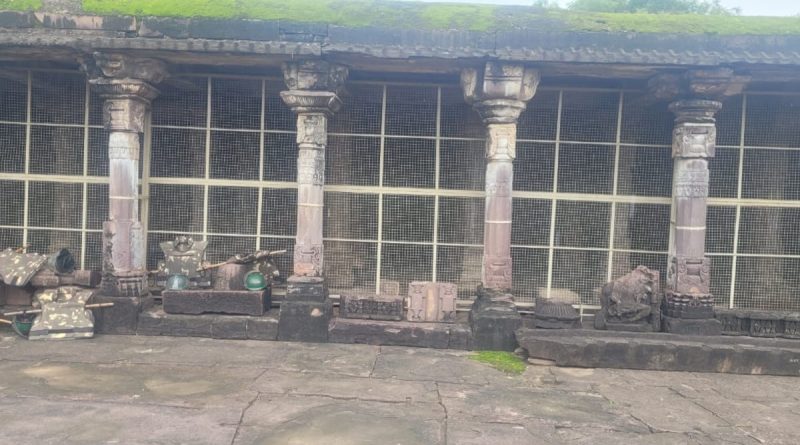Archaeological Body’s Statement Sparks Debate on Temple or Mosque in Vidisha, Madhya Pradesh
A portion of Hindus requested authorization to adore inside this ‘Nag Panchami’ structure.
Bhopal:
After informing the Madhya Pradesh High Court that the Bhojshala Temple-Kamal Maula Masjid in Dhar district was constructed from the remains of previous temples, a different declaration by the Archaeological Survey of India has ignited a contentious discussion in the state.
The centuries-old Vijay Surya Mandir in Vidisha has observed individuals from the Hindu community worshipping from outside its locked gates during ‘Nag Panchami’ every year. However, when authorization was requested to enter and perform rituals during this year’s festival, the Archaeological Survey of India (ASI) identified the structure as the Bijamandal Mosque.
A few historians mentioned that the Vijay Surya Mandir, resembling the new Parliament House in terms of architecture, was constructed in the 11th century by Chalukya Vanshi Vachaspati, the key minister of the Paramara period ruler Raja Krishna. The temple’s stones depict the saga of the Paramara kings.
As part of an agreement between the administration and the Hindu and Muslim communities in 1965, the temple gates were locked.
When a group of Hindus sought permission to enter the temple and worship on ‘Nag Panchami’ this year – celebrated on Friday – the local administration, headed by Collector Buddhesh Kumar Vaidya, consulted the ASI. They were informed that, according to a 1951 gazette notification, the site was registered as the Bijamandal Mosque and not a temple. Subsequently, authorization was denied by the local administration.
Local Muslim leaders reiterated the historical importance of the Bijamandal Idgah.
Chaudhary Parvez Ahmed, interim president of the Muslim Society in Vidisha, stated, “The Muslim community has been offering prayers in the Bijamandal Idgah Mosque for a long time. An agreement was reached in 1965, and we stand by it. The idgah mosque was constructed by the government, and the land was acquired from the property entrusted to us.”
Another local resident, Abid Siddiq, added, “An agreement was reached, and if we return the structure, we will only hand it over to the Muslims.”
He emphasized the city’s history of communal harmony and expressed appreciation to the administration for preserving peace, while also advocating for maintaining the current situation.
Temple Committee
In response to the ASI’s position, the Vijay Mandir Mukti Seva Samiti was established in Vidisha under the leadership of BJP MLA Mukesh Tandon. The committee presented a memorandum to the collector and superintendent of police, urging a second examination of the site. Mr. Tandon argued that the structure’s history and the community’s emotions should be duly considered.
The local populace remains divided on the matter. A resident, Rakesh Sharma, declared, “The collector labeled it a mosque, but it was a temple. We worship here on ‘Nag Panchami’, and there is discontent among the residents… Every year, we conduct rituals from outside the locked gates, but this time we contemplated performing them from inside. The collector inaccurately identified it as a mosque.”
Additional Superintendent of Police Prashant Choubey affirmed that law and order in the area would be upheld, irrespective of the committee’s demand outcome.
Excavations In 1934
Historians revealed that the Vijay Surya Mandir encountered various hardships throughout its history and was besieged five times during the Mughal era, with the final onslaught led by Aurangzeb, who destroyed the temple and erected a mosque – known as the Alamgiri Mosque – in its place. The temple later regained prominence during the Maratha kings’ rule but deteriorated and was submerged in floodwaters.
The temple’s remnants were unearthed during excavations in 1934.
Historian Arvind Sharma mentioned, “The temple was completed during Naravarman’s reign of the Paramara dynasty, which thrived in central India in the medieval era. The temple was a testimony to the craftsmanship and devotion of the time, reaching an impressive height of around 305 feet, as documented by the renowned Persian scholar and historian al-Biruni. Its towering structure, embellished with intricate carvings and massive stones, was designed to reflect the grandeur of the sun god it was dedicated to.”
The temple’s architectural arrangement, with its triangular shape and large pillars, is believed to have influenced the design of several other significant structures in India, including the new Parliament House in New Delhi.
The Hindu Mahasabha played a vital role in the temple’s contemporary history, advocating for its restoration.
Waiting for response to load…

